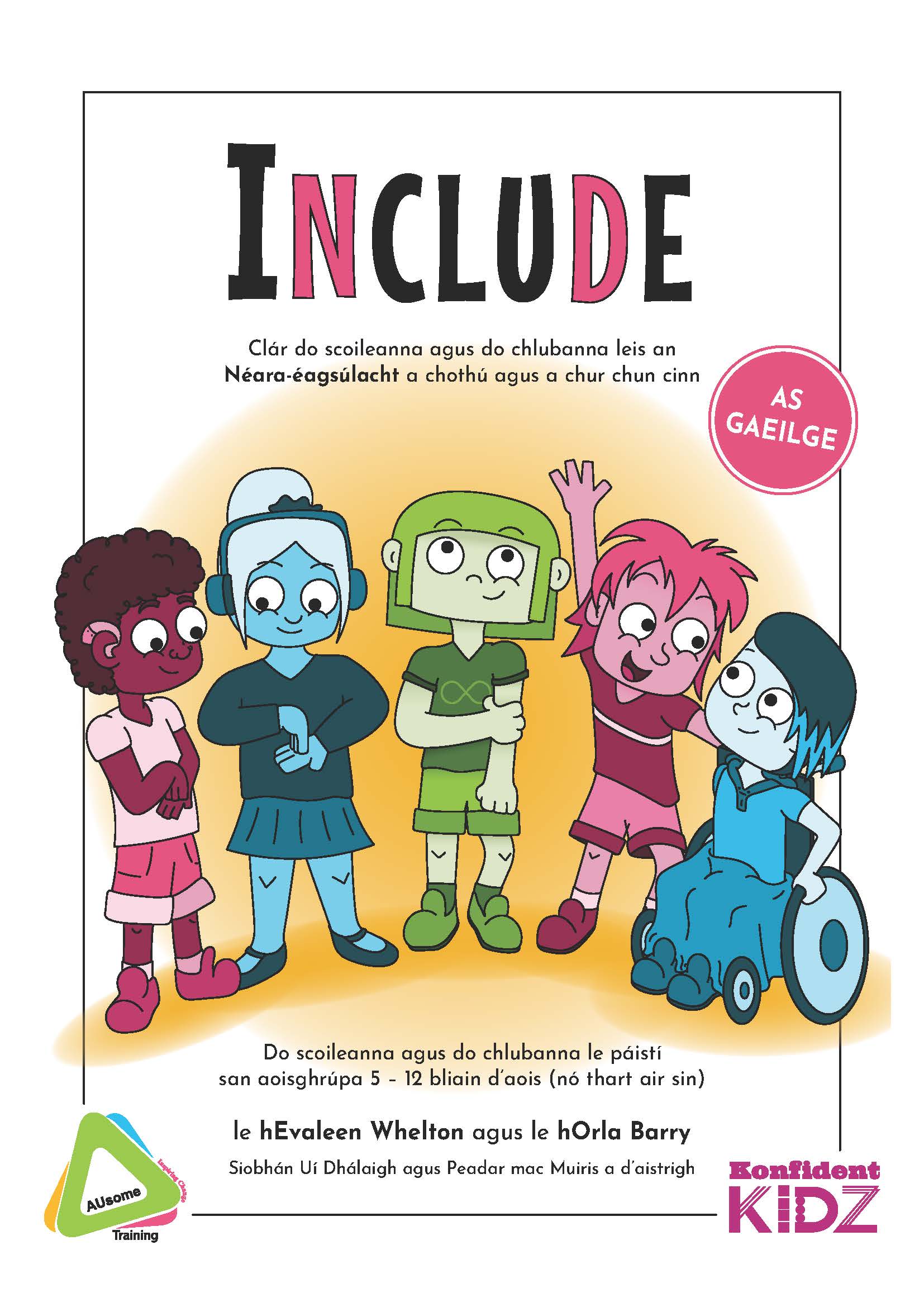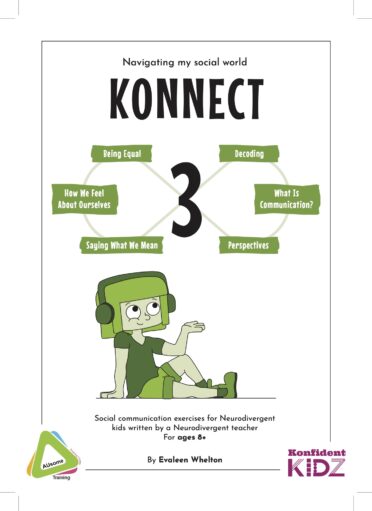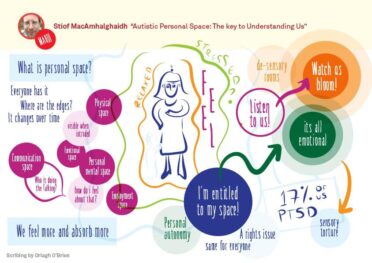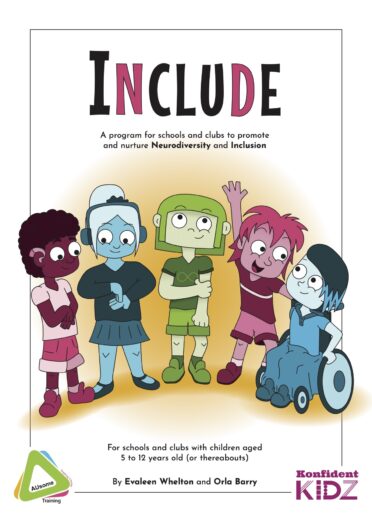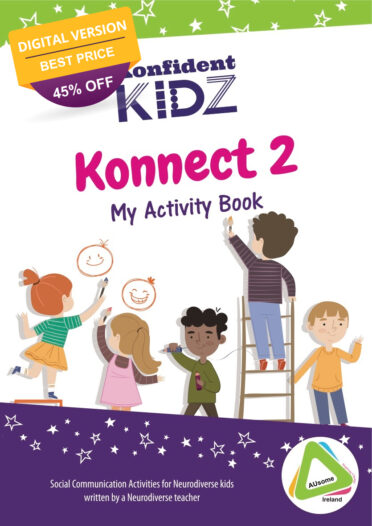Description
Neurodiversity and Inclusion in Schools and Clubs
Include is a wonderful program for Inclusion and acceptance in Schools. It is written by Neurodivergent educators to support schools to promote and nurture Neurodiversity and Inclusion.
Include is a program designed for schools and clubs to explain, explore and nurture Acceptance of Neurodiversity. Neurodiversity exists in every school and club in every country in the world. And yet it is something seldom mentioned. It is largely still considered a taboo subject. When we make something taboo then those who experience it often suffer. They suffer from exclusion and oppression. As a result of this exclusion and oppression Neurodivergent kids often develop low self esteem and a fragmented sense of sel. They can often feel worthless and unwanted at worst and misunderstood at best. We wrote this program to bring the concept out of the shadows and to be celebrated in schools and clubs across the world.
As educators who are ourselves Neurodivergent we are only too familiar with the pain experienced by Neurodivergent kids. This pain is unnecessary and the Include program will support you to become a more inclusive school or club.
Include is a ten week program consisting of ten easy to follow lesson plans for schools and clubs with children aged 5 to 12 years.
Buntáistí an Chláir
• ·Pleananna Ceachta atá éasca á leanúint
• ·Tugann sé deiseanna don ionchuimsiú
• ·Forbraíonn sé ionbhá i measc píoraí
• ·Forbraíonn sé tuiscint sna héascaitheoirí
• ·Tugann sé deiseanna d’éascaitheoirí níos mó a fhoghlaim faoi na páistí atá faoina gcúram
• ·Tugann sé deiseanna don fhoghlaim leanúnach
• ·Tá sé deartha ag oideachasóirí Néara-éagsúla
Cuspóirí an chláir seo
D’aithin muid 5 phríomhchuspóir a bhainfear amach ag deireadh an chláir seo.
1. Insint na céille atá leis an Néara-éagsúlacht a athfhrámadh.
Is iomaí toimhde a dhéantar faoi dhaoine Néara-éagsúla agus go leor acu diúltach, míchruinn
nó an dá rud. Leis an chlár seo, ba mhaith linn tuiscint chuimsitheach, ar son na Néaraéagsúlachta a thabhairt d’éascaitheoirí agus do pháistí ar chumarsáid agus ar mhothúlacht
Néara-éagsúil.
2. Béim a chur ar thábhacht an ionchuimsithe.
Míniú ar cé chomh minic a mhothaíonn páistí Néara-éagsúla fágtha amach as an ghrúpa.
Cuireann an Clár INCLUDE béim ar an bhealach gur féidir le gach duine iarracht ghníomhach a
dhéanamh le go mothaíonn daoine eile páirteach.
3. Smaointeoireacht chruthaíoch a éascú.
Spreagann gníomhaíochtaí an chláir seo na páistí: chun ról gníomhach a ghlacadh in oiliúint
phobal na scoile agus na gclubanna; samhlaíochtaí iontacha s’acu a úsáid le teachtaireachtaí
an chláir seo a scaipeadh. Ní hé amháin go mbeidh úsáid fhocail agus smaointithe na ndaltaí
féin ina fheachtas níos tuisceanaí don ionchuimsiú ach cuirfidh sé le cumhachtú na ndaltaí
abhcóideacht ionchuimsithe a dhéanamh.
4. Deiseanna féinmhacnaimh a thabhairt do na daltaí ar fad.
Is cuma Néara-éagsúil nó Néaraitipiciúil an dalta, tugann an clár seo deis do dhaoine óga
anailísiú a dhéanamh ar a modh smaointeoireachta, ar a léiriú mothúcháin agus ar an
bhealach a mhothaíonn siad an domhan mór timpeall orthu. Tugann gníomhaíochtaí an chláir
seo tacaíocht do pháistí measúnú a dhéanamh ar pheirspictíocht s’acu ar an domhan mór.
5. Próiséas na foghlamtha a dhéanamh taitneamhach.
Go ginearálta creidimid gur chóir do phróiséas an oideachais a bheith taitneamhach. Tá cluichí
agus gníomhaíochtaí an chláir seo bunaithe ar na healaíona cruthaitheacha agus iad ar fáil do
chách. Cionn is gurb é seo tús teagmhála na Néara-éagsúlachta do go leor scoileanna agus do
chlubanna, tá muid ag iarraidh gur eispéireas deafach a bheas ann.
Cad é leis a mbeifeá ag dúil sa chlár?
Dhear muid dhá chlár éagsúla de 10 gceacht do dhá aoisghrúpa dhifriúla. Roinneadh na
gníomhaíochtaí in aoisghrúpaí de cúig bliana go seacht mbliana agus ocht mbliana go dhá
bhliain déag. Tá gníomhaíochtaí difiúla ann don dá aoisghrúpa. Úsáidimid gníomhaíochtaí de
bhunús ealaíon cruthaitheach mar shampla, aisteoireacht, gluaiseacht, canadh, tarraingt, teicnící
colláise agus níos mó le éascú a dhéanamh ar thuiscint na Néara-éagsúlachta. Tá muid bródúil as
an chur chuige foghlaim fríd an ealaíon.
Clúdaíonn gach ceacht ábhar difriúil a bhaineann leis an néara-éagsúlacht. Molaimid ceacht
amháin in aghaidh na seachtaine ar feadh deich seachtaine. Tugann an amlíne seo deiseanna
machnamhacha do dhaltaí agus d’oideachasóirí maraon agus coinníonn sé na coinceapanna úrnua
in intinn gach duine.
What are schools saying about Include Program?
Don’t just take our word for it, folx!
We sent our program to Trina Golden, Principal Owenabue ETNS
And here is what she had to say about it:
“Buy this programme, buy it now.
I got a preview of this programme and I can’t adequately describe how much I adore it, and it existing.
This is something that has been missing in schools, a programme based on developing shared understanding
A few thoughts:
The programme describes one of its objectives as reframing the narrative around neurodiversity. It aims to not only educate all kids about neurodiversity but to empower them to advocate for inclusion for themselves and their ND friends.
While aims are well & good, the reality in a busy classroom with a packed curriculum is simplicity matters. Here is where it shines. It has short simple background info for staff (this programme is imo as important for staff as kids).
It then has two sections of lesson plans
For younger and older kids there are 10 lessons each, the idea being once a week for 10 weeks. Simple lessons, clearly laid out. Very easy to pick up and follow.
They seem like they’d be usable as whole class or small group.
I love that it head on calls out some of the myths about ND children. This is vital in Education I think as so many are still prevalent, even in staff. That background knowledge for staff, which they can then go away and learn more about if they’d like, could be a gamechanger
They also include inclusion tips with each lesson, to help adapt the lesson to meet the needs of your pupils as needed.
Probably most importantly, it’s written by ND teachers. Their knowledge and lived experience is something that can’t be read or learned. That feeds into every part of the programme and you can nearly feel it.
Despite the gushing, this is not an ad. I’ll be buying the programme for school here.
As a parent to an ND child it makes me genuinely emotional to see the work Evaleen and Orla have put into this to really work to improve inclusion. Not the buzzword, real inclusion.
Every school needs a copy of this.
Well done AUsome Training . Thank you Evaleen and Orla.”

